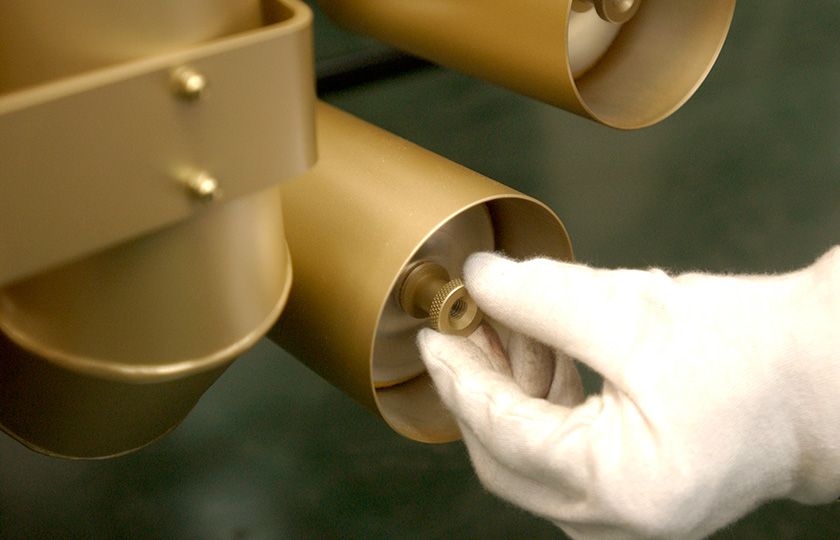How a Marimba is Made
The instrument is finished when the sound is checked
The marimba requires accurate pitches
Finally, the sound is checked. The pitch (height of the notes) of a marimba is fixed by the tone plates and cannot be shifted. This makes the marimba different from, for example, string instruments, with which players can adjust the sounds of each string. Thus, the marimba becomes the standard for adjusting pitches during performances by groups, ensembles, and so forth. This is another reason why accuracy is required. A dedicated staff performs strict checks to see whether an assembled marimba has the right pitch.
Movable bottoms that allow the reverberations to be adjusted
Once the pitch has been properly tuned, the next step is to adjust the volume. The marimba in the photograph has a movable bottom for each resonator pipe in the lower notes. Moving these bottoms adjusts the volume. The positions are adjusted subtly while listening to the sounds of the tone plates. These subtle movements alter the reverberations; the exact right position will maximize the volume.
The room where this work is performed is set to a temperature of 23°C, and the instrument is placed there to adjust to the room for at least two hours, after which the instrument is adjusted so that the sounds resonate the most. During concerts and the like, the locations of the movable bottoms can be altered to suit the room temperature, adjusting how much the sound resonates.

Subtly adjusting the position

Adjusting the movable bottoms while listening the sounds of the tone plates being struck
Musical Instrument Guide : Marimba Contents
Origins
Structure
- What kind of instrument is the marimba?
- Inside and outside the resonator pipes
- There is craft to the design of the tone plates, too
- [Experiment1]Tone plate sanding depth and sound pitch experiment
- [Experiment2]Tone plate sanding location and sound pitch experiment
- [Experiment3]Try changing the material of the resonator pipes
